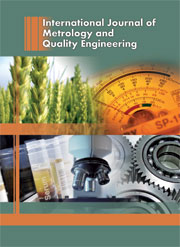Article contents
Method development for the analysis of biodegradablepolymers
Published online by Cambridge University Press: 19 April 2010
Abstract
In today’s modern world, plastics are used for a variety of everyday applications fromplastic shopping bags to medicinal applications, but most of these plastics are resistantto environmental influences such as humidity and microbial attack. The ecological problemwe now face in our landfills is the large volume of non-biodegradable plastics, which hasmade the development of biodegradable plastics an urgent matter. Because of thissituation, the Chemical Metrology Group of NMISA (National Metrology Institute of SouthAfrica) has embarked on a collaborative effort with the Fibre and Polymer TechnologyDepartment of KTH (Royal Institute of Technology) in Sweden to develop methods for theanalysis of biodegradable polymers. During the project, commercial and research samplesare analysed with various techniques, such as Pyrolysis-GC-MS, GPC, FTIR, SEM, TGA,TGA-FTIR and DSC. The aim is primarily to evaluate what information can be obtained byPyrolysis-GC-MC and FTIR-TGA with respect to thermal properties and degradation products.Currently polylactide (PLA) is the focus of many studies and it is one of the mostpromising degradable polymers. One trend is to improve the properties of PLA throughaddition of different nanofillers. In this work polylactide nanocomposites are made byblending polylactide (PLA) with zinc oxide, titanium dioxide, halloysite (aluminosilicate)or surface modified montmorillonite (phyllosilicate). The materials are characterized byscanning electron microscopy (SEM) and DSC. The thermal stability and resulting thermaldegradation products are analysed by TGA and Py-GC-MS. The results especially show theinfluence of nanoparticle surface modification on the degradation product pattern.
Information
- Type
- Research Article
- Information
- International Journal of Metrology and Quality Engineering , Volume 1 , Issue 1 , 2010 , pp. 29 - 32
- Copyright
- © EDP Sciences 2010
References
- 4
- Cited by

